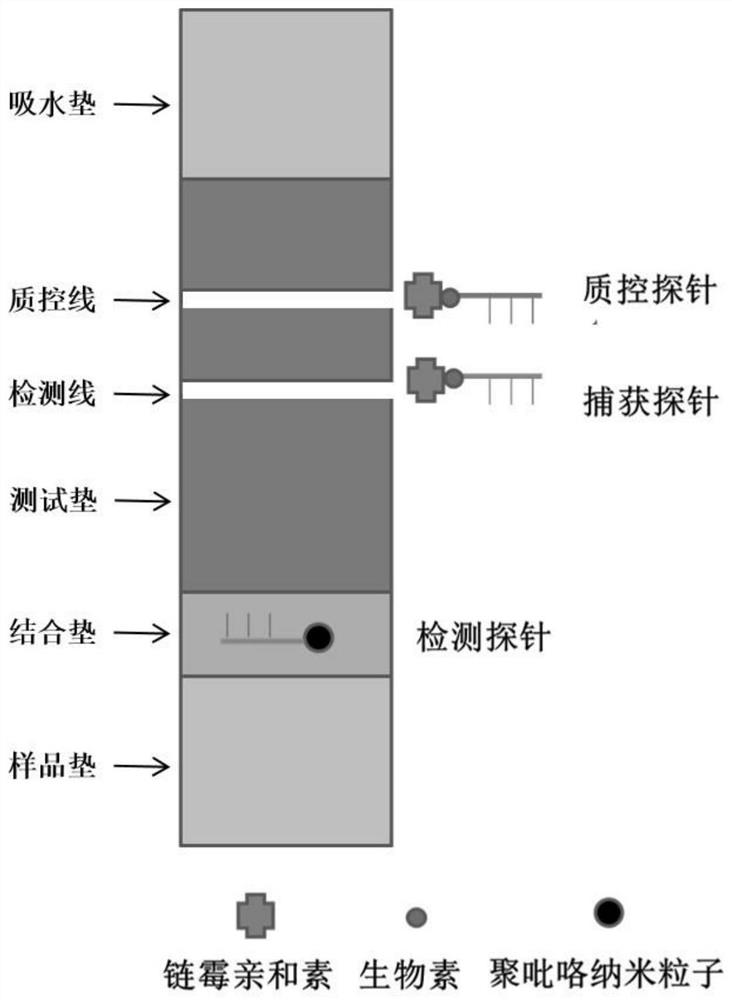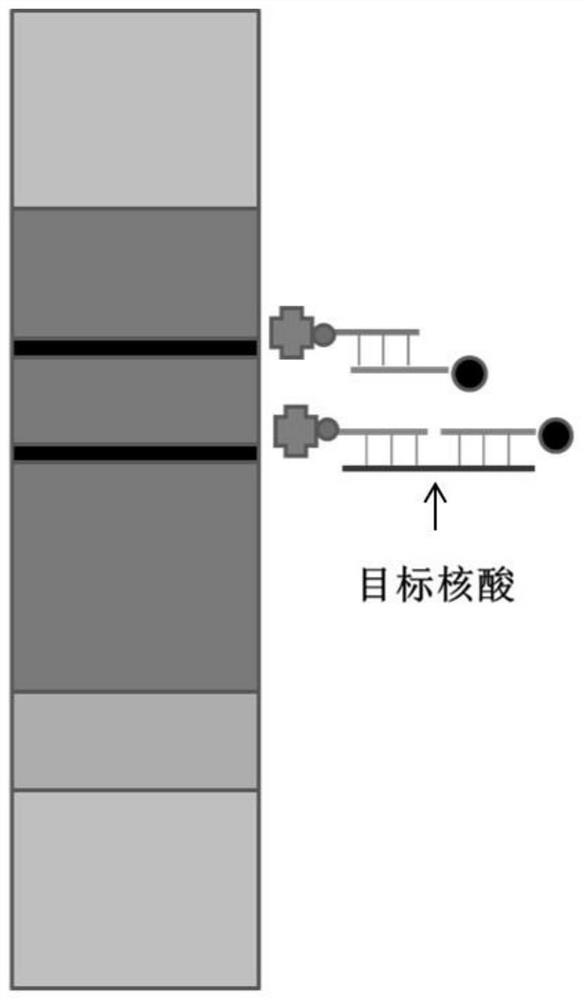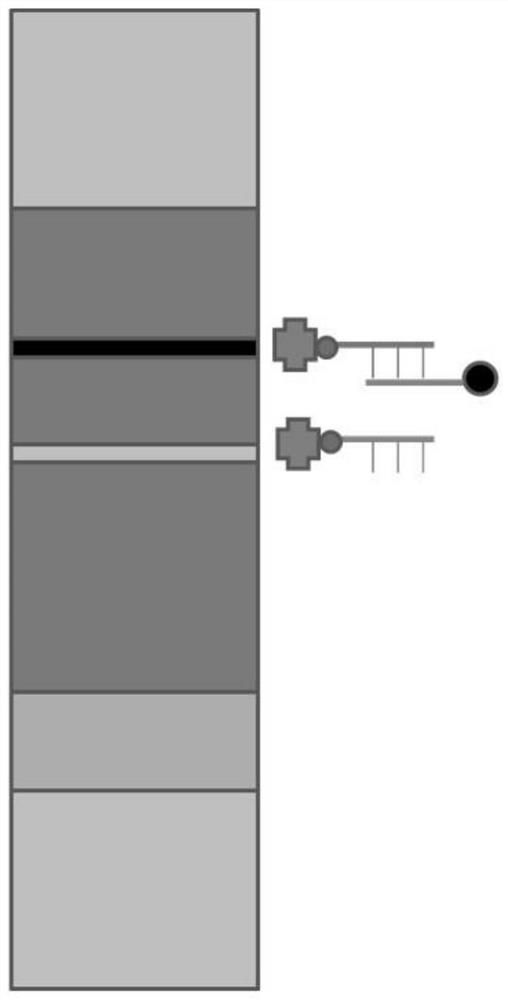Marker nucleic acid probe, preparation method thereof, test strip and application of polypyrrole nanoparticles
A nucleic acid probe and pyrrole nanotechnology, applied in biochemical equipment and methods, microbial measurement/inspection, etc., can solve problems such as low sensitivity, and achieve the effects of improving detection sensitivity, high photostability, and high storage stability
- Summary
- Abstract
- Description
- Claims
- Application Information
AI Technical Summary
Problems solved by technology
Method used
Image
Examples
preparation example Construction
[0040] The present application also provides a method for preparing the above-mentioned marker nucleic acid probe, comprising the following steps:
[0041] S1, providing a dispersion of polypyrrole nanoparticles;
[0042] S2, sequentially adding deoxynucleotides, a first stabilizer and a detection probe to the dispersion to perform a coupling reaction, so that the detection probe is coupled to the polypyrrole nanoparticles.
[0043] In some embodiments, in step S1, the polypyrrole nanoparticles are dispersed in deionized water to obtain the dispersion, and the mass fraction of the polypyrrole nanoparticles in the dispersion is 1.5wt‰˜2.5wt‰.
[0044] In some embodiments, the preparation method of the polypyrrole nanoparticles is as follows: adding pyrrole monomers to the first solution containing the second stabilizer, then adding an oxidant to carry out oxidative polymerization, and finally adding a terminator to terminate the reaction, centrifuging Purifying the reacted sol...
Embodiment 1
[0071] Polypyrrole nanoparticle dispersion preparation: add water 100mL in 500mL Erlenmeyer flask, PVA (M w =31000) 8g, stirred at 900rpm for 20min at room temperature; added 500mg of pyrrole monomer, stirred at 900rpm for 20min at room temperature; quickly added 50mL (56mg / mL) of ferric chloride aqueous solution, stirred at 1500rpm for 6h at room temperature, added 20mL of methanol to terminate the reaction, Centrifuge at 15000rpm for 30min to remove the supernatant, wash the gained solid three times with hot water, and then disperse it in water for subsequent use. The mass fraction of polypyrrole nanoparticles in the dispersion is 2.5wt‰, and the average particle diameter of polypyrrole nanoparticles is 46nm, such as Figure 8 shown.
Embodiment 2
[0073] Polypyrrole nanoparticle dispersion preparation: add water 100mL in 500mL Erlenmeyer flask, PVA (M w =9000) 8g, stirred at 900rpm for 20min at room temperature; added 500mg of pyrrole monomer, stirred at 900rpm for 20min at room temperature; quickly added 50mL of ferric chloride aqueous solution (56mg / mL), stirred at 1500rpm for 6h at room temperature, and added 20mL of methanol to terminate the reaction. Centrifuge at 15000rpm for 30min to remove the supernatant, wash the gained solid three times with hot water, and then disperse it in water for subsequent use. The mass fraction of polypyrrole nanoparticles in the dispersion is 2.5wt‰, and the average particle diameter of polypyrrole nanoparticles is 89nm, such as Figure 9 shown.
PUM
 Login to View More
Login to View More Abstract
Description
Claims
Application Information
 Login to View More
Login to View More - R&D
- Intellectual Property
- Life Sciences
- Materials
- Tech Scout
- Unparalleled Data Quality
- Higher Quality Content
- 60% Fewer Hallucinations
Browse by: Latest US Patents, China's latest patents, Technical Efficacy Thesaurus, Application Domain, Technology Topic, Popular Technical Reports.
© 2025 PatSnap. All rights reserved.Legal|Privacy policy|Modern Slavery Act Transparency Statement|Sitemap|About US| Contact US: help@patsnap.com



